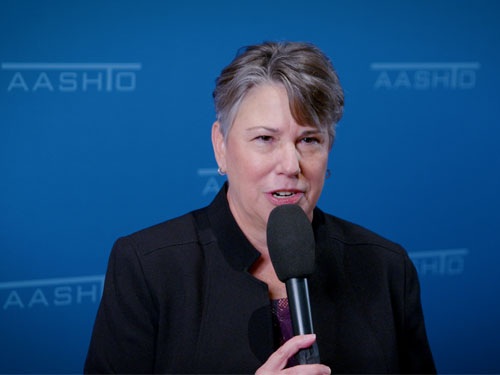A letter sent September 8 to Mark Meadows, White House chief of staff, called for presidential support for preserving the 5.9-gigahertz (GHz) wireless spectrum communication band for transportation safety needs.
[Official White House photo above by Andrea Hanks.]
Co-signed by some 40 organizations including the American Association of State Highway and Transportation Officials, the letter noted that the Federal Communication Commission’s effort to reallocate spectrum in the 5.9 GHz band away from transportation safety “undermines” efforts to reduce traffic fatalities and injuries, improve overall motor vehicle safety, and reduce traffic congestion.

That reallocation “would also harm U.S. global competitiveness with respect to next-generation automotive safety technologies,” the letter said. It went on to note that vehicle-to-everything or V2X technologies using that spectrum could eliminate or mitigate the severity of up to 80 percent of non-impaired motor vehicle crashes and 70 percent of crashes involving commercial trucks: saving lives, eliminating injuries, and reducing the $800 billion in annual costs associated with crashes on American roads.
“Billions of dollars – including at least $2 billion in public funding from federal, state, and local governments – have been invested in the development and deployment of V2X technology,” the letter noted. “[That] technology is uniquely capable of reducing traffic congestion through prioritized traffic signal timing, truck platooning, and crash reduction, reducing travel time and delays for commuters and commerce alike – delays that cost the nation more than $166 billion annually according to USDOT.”

A new white paper issued by the 5G Automotive Association (5GAA) echoed those points. “With close to 200 million ‘connected vehicles’ already on the roads worldwide in 2020 and a growing number of vehicles with the ability to exchange traffic and road condition information over cellular networks, the foundations for 5G-connected driving are well established,” that paper noted.
“Between now and 2024, ‘connected’ digital road infrastructure will pave the way for real-time or ‘dynamic’ traffic updates, hazard warnings, and high-definition mapping services,” the group said. “Towards 2026, advanced vehicle-to-vehicle (V2V) cooperation will further boost automated driving developments, including sharing sensor data and cooperative maneuvering.”

However, those developments cannot occur without adequate wireless spectrum band reserved for transportation-dedicated communication systems.
“All in all, to deliver end-to-end V2X services and unlock the true value of vehicle connectivity, 5GAA considers that the realization of its roadmap would require: sufficient spectrum for short-range direct communications at 5.9 GHz; high levels of mobile network coverage along the roads; and sufficient service-agnostic mobile network spectrum for mobile network-based communications,” the white paper noted.
“The essence and great promise of 5G is that it makes better use of the radio spectrum, boosts mobile network coverage, security and safety, while delivering environmental benefits for citizens and consumers,” it stated.
 Top Stories
Top Stories
USDOT Makes $1.5B Worth of BUILD Grants Available
December 19, 2025 Top Stories
Top Stories

